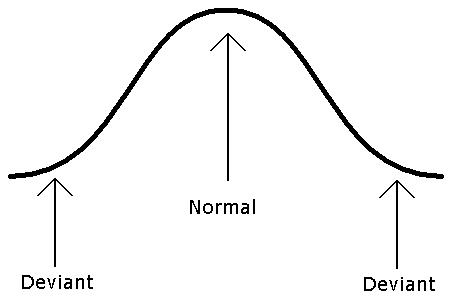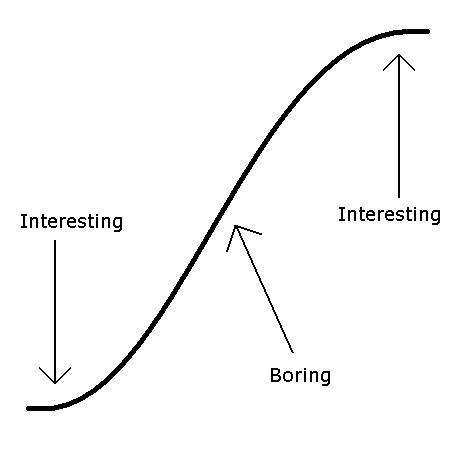Yesterday I saw a wonderful talk by my good friend Wave who works at Pixar. He was describing their creative and production process, and how everyone at the company is committed to making each film something that they will all be proud of in the years to come. Clearly the process is working!
I learned a lot from the talk, but my favorite moment (apparently the favorite moment of many in the audience) was this choice quote from Pixar character designer Jason Deamer:
“Pain is temporary. Suck is forever.”
In addition to being incredibly funny, this is just about the perfect motivational statement, and it might very well become my new Mantra. I tried to do a Google search today on this phrase, and came up empty. But I did learn that there is a song by Don Diablo called Pain is temporary. Pride is forever. I confess I had not even heard of Don Diablo, so I watched the video of this song, which is clearly popular (over 256000 hits on YouTube). The video showed that the man is very talented, so I went to his Wikipedia page, and that stopped me up short, because it seemed to be unintentionally hilarious. I mean really laugh out loud unintentionally hilarious, filled with the sort of over-the-top shameless self-promotion you might see in a comic character created by Ben Stiller or Sacha Baron Cohen.
Then I checked out the video of his his breakout hit Blow, and suddenly I saw the humor, the deliberate absurdity, behind the apparently deadly serious pose. Which is when I realized that his entire Wikipedia page is a construct. It’s not exactly a piece of shameless self-promotion – rather it is a sketch of a made-up character. Don Diablo (whose real name is Don Pepijn Schipper) is creating a fictional persona named Don Diablo, and is placing just enough hints in his portrayal of that character to invite us in on the joke.
Diablo’s clearly self-scripted Wikipedia entry is an example of postmodern advertising. What is being advertised is not the character, but rather the producer behind the character. He wants us to understand that his real talent is as a producer, a creator of images, and that his acting, singing, songwriting, musical production and post-production, etc., are all merely aspects of this work as a producer. The description is intentionally ridiculous because Diablo the producer is sending up Diablo the character.
So it all comes full circle – Jason Deamer and Don Diablo are both, in their different ways, character sketch artists, creating concepts for what are, in the end, highly sophisticated cartoon versions of reality. Whether it’s a love-sick futuristic robot who listens to old Jerry Herman songs, a little gray rat who makes the world’s greatest ratatouille, or a white Dutch rapper voted Holland’s best dressed man of the year whose web page reports that he does all his musical production in the nude, the goal here is the pointed send-up, the artfully exaggerated illusion that holds up a mirror to society and its absurdities.
And in each case the illusion requires that every detail be placed carefully, no matter how much work is required, so as not to ruin the effect. Which is important, because, like the man says: Pain is temporary, suck is forever.

